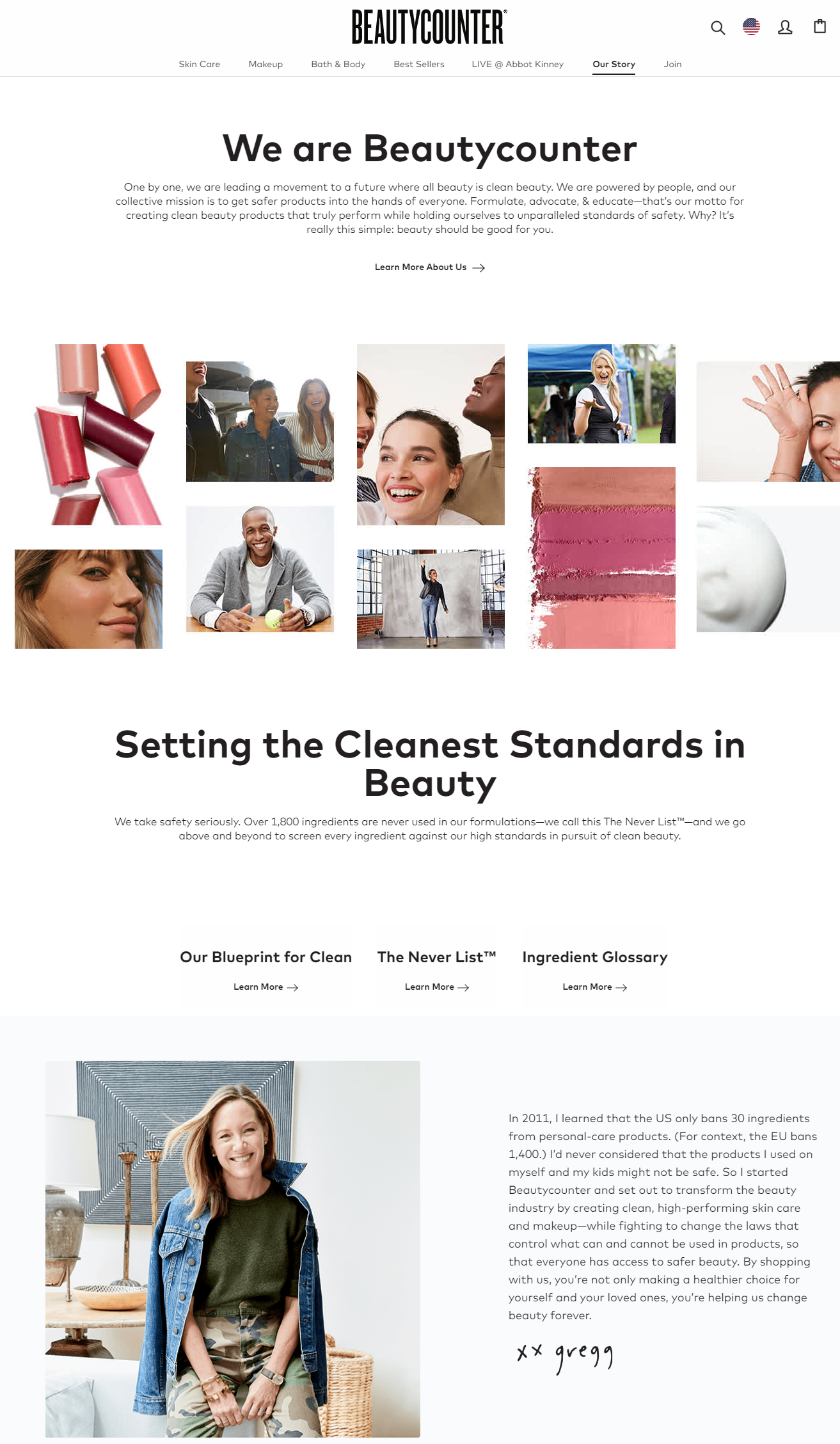Product positioning is the process of determining new products’ position in the minds of consumers. It includes analyzing the market and competitors’ positions, defining the position of a new product among the existing ones, and communicating a particular brand’s product image.
Companies can implement product positioning by using communication channels, pricing, or quality of the products to stand out and be recognizable. In this article, we’ll discuss the importance of product positioning and its benefits, talk about several strategies, explore the steps you need to take to position your product, and see several examples.
Why is product positioning important?
Each brand has to know its customers to provide a product that resonates with their needs. A well-thought-out strategy can determine the position of this product within the market and identify its benefits for consumers.
The process involves creating a particular image of a brand and its products in consumers’ minds and identifying the key benefits to show how a particular product differs from competitors’ alternatives. Afterward, the difference is communicated to a brand’s target audience through the most effective communication channels. The messages brands convey to their customers should evoke interest.
Marketers need to determine the best ways to present specific products and reach their target audience based on customers’ needs, competitive alternatives, the most effective communication channels, and tailored messages. Implementing product positioning strategies enables companies to create messages that address their customers’ needs and wants and entice them to purchase.
There are even more pros this type of marketing can bring, so check out our list to know all of them.
Benefits of product positioning
We’ve prepared the top benefits of product positioning that show why it’s one of the most effective marketing tactics. It helps in:
- identifying key benefits of a product and matching them with customers’ needs;
- finding a competitive advantage even when the market changes;
- meeting customers’ expectations;
- reinforcing your brand’s name and its products;
- winning customer loyalty;
- creating an effective promotional strategy;
- attracting different customers;
- improving competitive strength;
- launching new products;
- presenting new features of existing products.
Now that you know the advantages, we’ll move to the next section to review product positioning strategies.
5 Product Positioning Strategies
- Characteristics-based positioning
- Pricing-based positioning
- Use or application-based positioning
- Quality or prestige-based positioning
- Competitor-based positioning
While a lot of time is devoted to product development, only a few companies think about how consumers will perceive the product when it’s already in the market. Product positioning is about understanding the products you decide to introduce to the masses. That’s why it’s critical to pay attention to what your customers think. Let’s explore the key strategies that will help you define the position of your product.
- Characteristics-based positioning. Brands give certain characteristics to their products that aim at creating associations. It’s done to make consumers choose based on brand image and product characteristics. Let’s take the automobile industry, for example. A person who worries about safety will probably choose Volvo because of the brand’s positioning. At the same time, another customer who pays attention to reliability would prefer Toyota.
- Pricing-based positioning. This strategy involves associating your company with competitive pricing. Brands often position themselves as those that offer products or services at the lowest price. Let’s take supermarkets, for example. They can afford to provide customers with products for lower prices because of the lower costs they pay for shipping and distribution, huge turnover, and a large procurement of goods. As a result, many consumers already know the supermarkets with attractive prices and choose them without considering other options.
- Use or application-based positioning. Companies can also position themselves by associating with a certain use or application. People who adhere to a healthy lifestyle create a great demand for products that help increase performance in the gym. Hence, many businesses offer nutritional supplements. These brands sell supplements that are high in calories, vitamins, and minerals.
- Quality or prestige-based positioning. The brands we are talking about now don’t concentrate on their price point; they focus on their prestige or high quality instead. Sometimes, it’s the reputation that makes a brand attract customers. Let’s take Rolex, for example. This famous watch brand is associated with achievement and excellence in sport and is popular among powerful and wealthy people.
- Competitor-based positioning. The strategy involves using competitors’ alternatives to differentiate products and highlight their advantages. It helps brands distinguish their products and show their uniqueness.
The difference is clear now, so it’s time to jump to the steps required for successful product positioning.
10 Steps to Position Your Product
- Define your target audience
- Identify the key benefits of your product
- Establish brand credibility
- Offer a unique value proposition
- Consider audience segmentation
- Craft your messaging
- Do a competitive analysis
- Demonstrate your expertise
- Focus on your competitive advantage
- Maintain your brand’s position
The way your customers perceive your brand is crucial since they define your sales volume, the success of your business, and the profits your company will earn. Therefore, you should be ready to present your products honestly and effectively. To do this, you need to consider the following steps.
- Define your target audience. Knowing your customers' needs, wants, demographics, and interests allows you to give them the product they strive for. This way, you can reach your target audience and motivate them to buy your products. For this purpose, you need to be well-prepared and operate the necessary information.
- Identify the key benefits of your product. Benefits are a top priority for any customer who wants to solve a particular problem. As a business owner, you need to know all the peculiarities of your products or services, including their features and advantages. You need to identify your key perks and communicate them to the masses so that they can consider your product when reviewing several options.
- Establish brand credibility. You need to create a brand that people can rely on to build trusting relationships and encourage your customers to make repeat purchases. Consumers are more inclined to make repeat purchases from companies with a good reputation and high credibility. Remember not to make promises you can’t keep and claims that can’t be verified. Prioritize honesty and transparency since they will help you build a healthy product positioning strategy.
- Offer a unique value proposition. Communicate the value your product can bring to your target audience. You need to be aware of the fact that consumers won’t choose a product if they can’t benefit from it. Explore your product, find its benefits, and search for the most appropriate communication channels to convey them to your leads and customers effectively.
- Consider audience segmentation. If you want to obtain the best results, you need to segment your audience since your product can’t satisfy all your customers’ needs. You can divide them into groups based on their interests, traits, and needs to create customized messages. As a result, you’ll be able to appeal to their individual wants and needs and provide them with your product as a solution.
- Craft your messaging. Once you segment your customers, it’s necessary to select the right communication channels for each group. Some of them might prefer social media platforms, but others might use traditional channels like TV and radio. Give some thought to writing a positioning statement (a description of a product, its target audience, and how this product can solve a problem that arises). It will help you prepare personalized and effective messages that speak to the needs and preferences of each group.
- Do a competitive analysis. Once your message is ready, you need to evaluate your competitors’ businesses and the products or services they offer. Competitor research gives you a clear understanding of your rivals, their offers, and what makes your product different in a positive way. Afterward, you’ll be aware of the distinctive features and benefits your product has, your core values, innovations, and various improvements your company provides consumers with.
- Demonstrate your expertise. Explain to your customers why they should choose you over your competitors. You should also prove that your product is better and that it has several benefits useful for consumers. There are several ways to show the quality of your product or its benefits: testing, trials, demonstrations, etc.
- Focus on your competitive advantage. These are the factors that enable your company to manufacture better or cheaper products and outperform your competitors. You need to speak about the actual benefit your product provides. Customers should truly need this product and obtain its visible value. It also includes staying up-to-date and adapting to new trends and innovations.
- Maintain your brand’s position. Once you reach this step, you need to maintain your brand’s position so that customers continue buying your products. If you aim to operate this successfully, you should never compromise on quality and increase or reduce prices drastically since it can make customers suspicious.
Now that you know the steps, let’s move to the examples.
Examples of Product Positioning
We’ve prepared several examples of famous brands that work in different industries and implement product positioning. Let’s dive in to grab some inspiration.
Beautycounter — clean beauty
The brand famous for its skincare and cosmetic products promotes clean beauty. The company strives to create products that are safe for our environment. Beautycounter stands for sustainability and uses ingredients that can’t harm the environment.

Nike — high quality
Nike, a famous brand that designs, develops, and manufactures running shoes and sportswear, positions itself as a company that provides athletes with high-quality, fashionable athletic sneakers and apparel.

Thrive Market — healthy living
This retail company offers customers healthy food from the best organic brands. They provide their clients with products at wholesale prices.

To sum it up, with a well-thought-out strategy, your company will be able to build an image you strive for and pave the way to reaching your audience. Plus, it will empower your company to be market-oriented, resonate with your customers’ needs, and easily adapt to the changes within the market.
Resources:
- This article defines the term, gives several examples, and uncovers the peculiarities of product positioning for small businesses.
- In this article, readers can find several great examples.
Last Updated: 22.03.2023

or